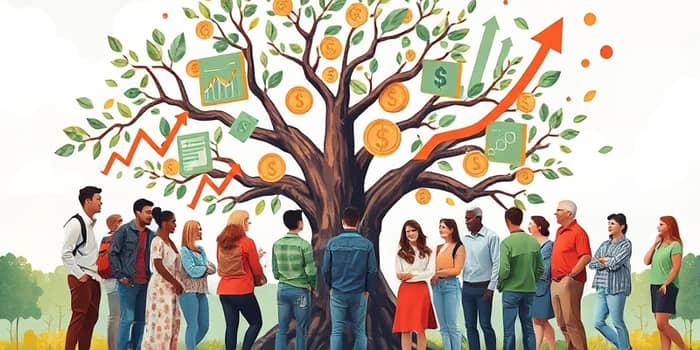
Financial decisions shape our lives from the moment we receive our first allowance to the day we plan our estates. Yet too often, formal instruction ends at graduation, leaving individuals unprepared for complex challenges in adulthood.
The data is clear: half of US adults lack basic financial literacy, and global surveys show persistent gaps across gender, age, and income levels. In an era of rapid digitization and economic volatility, embracing financial education as a lifelong pursuit has never been more important.
We live in an age of ever-changing financial landscapes. Fintech innovations, cryptocurrencies, and new regulatory frameworks constantly reshape how we save, invest, and spend.
By 2028, nearly one billion people may hold cryptocurrencies, demanding fresh skills in digital asset management and risk mitigation. Without ongoing learning, knowledge rapidly becomes obsolete—studies show that a portion of learned financial concepts fades within months if not reinforced.
Financial literacy extends far beyond spreadsheets and interest rates. It influences mental health, relationships, and overall wellbeing.
Research reveals that individuals with stronger financial skills are 9% less likely to experience stress or anxiety and report better physical health. Conversely, financial strain contributes to sleep issues, depression, and tension in relationships, affecting both personal and societal prosperity.
Over two-thirds of 15-year-olds in OECD countries already engage with financial products. Yet one-fifth lack the proficiency to apply basic concepts to real-life scenarios.
This gap fuels overconfidence among young investors entering markets unprepared, amplifying the risk of losses and long-term financial setbacks. Early habits take root, making targeted education in adolescence critical to building resilient money management practices.
Evidence confirms that well-designed financial programs yield lasting benefits. Short, focused interventions can significantly boost knowledge retention, while comprehensive curricula decrease credit delinquencies in adulthood.
To sustain progress, learners require periodic education refreshers that reinforce core principles, update emerging trends, and adapt to evolving life circumstances.
Each stage presents unique decisions, and tailored guidance empowers individuals to navigate transitions with confidence.
Governments, schools, and employers all play pivotal roles in fostering ongoing adult education programs. Policy initiatives now require personal finance education in 48 US states, with 35 mandating courses for graduation.
Employers increasingly offer financial wellness benefits—seminars, digital tools, and coaching—to reduce employee stress, boost productivity, and cultivate long-term loyalty.
Financial illiteracy disproportionately affects women, minorities, and low-income groups. Closing these gaps demands targeted community programs for empowerment and inclusive curriculum design.
Research shows that culturally relevant, gender-sensitive instruction increases engagement and retention, paving the way for broader financial inclusion and equity.
Regular assessments and feedback loops ensure that learners remain motivated and identify areas needing reinforcement.
Embracing financial education as a lifelong journey cultivates resilience in the face of economic uncertainty. It transforms money management from a source of stress into an opportunity for empowerment.
By nurturing a culture where learning never stops—supported by institutions, employers, and communities—we can equip future generations with the confidence and skills to thrive in a complex financial world.
Financial literacy should not end at graduation day. It must evolve alongside our life stages, technologies, and goals.
Commit to ongoing growth, seek out resources, and share knowledge within your circles. When individuals and societies invest in lifelong financial education, everyone benefits from sustained economic wellbeing and security.
References













